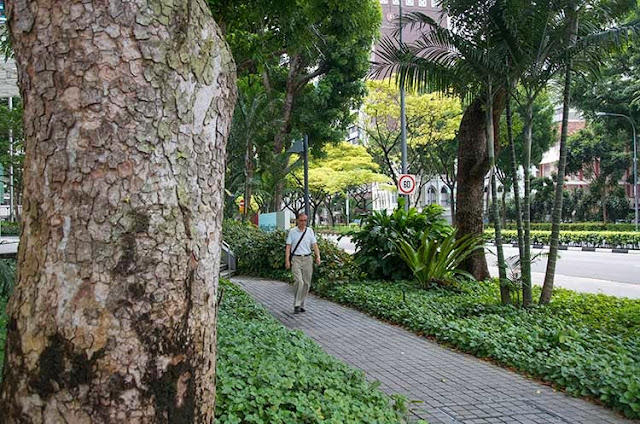DipteroWhat? This was my question, when I initially came
across the words Dipterocarpus and Keruing on a field trip with Nature Society Singapore (NSS) a year ago. The words were spoken by Dr Shawn Lum, president of
NSS, who guided the trip in MacRitchie Nature Reserve. He had found a big
fallen leaf on the forest floor and talked vividly about this leaf as being an
indicator of primary forest, i.e. a forest that is relatively untouched and
unlogged by humans. The leaf belonged to the majestic dipterocarp trees, whose
seedlings and saplings can only thrive in the shadowy primary rain forests.
I wanted to know more and was happy for an
opportunity to stay focused in the midst of the overwhelming diverse tropical
rainforest.
During the last year I have spend much time in
the forests of particularly Singapore, but also Borneo and Malaysia. I am collecting personal notes using botanical studies, photography, video recordings,
intuitive ink brush paintings etc. I read books and articles and I use all my meditative energy to become one-become two-become-TREE in order to
try to grasp the phenomenon of dipterocarps.
Thanks to botanist Joseph Lai, who is so passionate about MacRitchie and kindly has
taught me a lot and pointed out many dipterocarps, and thanks to
LoveMacRitchie and Toddycats for their highly informative and interesting
field trips.
For now, I have made a handmade collection of notes for Singapore Art Book Fair 2014 (thanks to Squelch Zines for hosting), but the work is still in progress, and my quest(ion) is as ever: DipteroWHAT?































